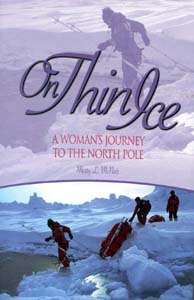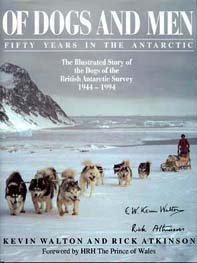Table of Contents
The Bigger Picture
*
Featured Inuit Dog Owner:
Paul Landry
*
Book Reviews:
On Thin Ice
Of Dogs and Men
*
Poem: Brave Little Heart
*
Janice Howls:
Hypothyroid Disease
*
Fan Hitch Contributor Receives Writing Award
*
Expedition News:
The Thule 2000
*
In My Humble Opinion:
Traditional Advice
*
Updates:
The Nunavut Quest 2000
Ihe ISDVMA Meeting
Navigating This
Site
Index of articles by subject
Index
of back issues by volume number
Search The
Fan Hitch
Articles
to download and print
Ordering
Ken MacRury's Thesis
Our
comprehensive list of resources
Talk
to The Fan
Hitch
The Fan Hitch
home page
ISDI
home page
Editor: Sue Hamilton
Webmaster: Mark Hamilton
Contents of The Fan Hitch Website and its publications are protected by international copyright laws. No photo, drawing or text may be reproduced in any form without written consent. Webmasters please note: written consent is necessary before linking this site to yours! Please forward requests to Sue Hamilton, 55 Town Line Rd., Harwinton, Connecticut 06791, USA or mail@thefanhitch.org

On Thin Ice: A Woman's Journey to the North Pole
by Matty McNair
reviewed by Geneviève Montcombroux
In 1997, Matty McNair led an all-woman expedition - The Women's Polar Relay - to the North Pole. On Thin Ice is her diary of the journey, and as such, is a brutally honest account. The expedition was plagued with problems from the very beginning. Not only was the supplied equipment inadequate, but the organizers of the expedition - people with no polar experience - behaved as though they knew more than Matty, herself a veteran arctic traveler. But they finally came to recognize that they had chosen the best woman for the job. Under Matty’s able leadership, twenty inexperienced women, in five relay teams of four, achieved their objective. The book stands as a guide to polar travel, vividly illustrating the difficulties of moving over the constantly shifting ice. We read of times when the harsh conditions sapped the morale of the party, followed by moments of hilarity. Matty sometimes wished she had her Inuit Dog team with her, but the British Woman's Polar Relay was inspired by Scott's epic (and ill-fated) journey to the South Pole. That expedition spurned the use of dog power and obliged the men to haul the sleds themselves. Fortunately, the women's outcome was more successful. Matty's worst nightmare came true on April 21, when an open lead she had just crossed broke up and two women took an unscheduled bath, as well as their rescuer, Denise Martin. Matty sums it up succinctly: "All too often, when there is a crisis situation, everyone focuses on the initial accident, oblivious of their own danger, and the situation snowballs into a major crisis." Matty's shrewd insights make this book compelling reading, in which the author swings from "trembling fear to giddy laughter."
On Thin Ice by
Matty McNair; ISBN 0-9685343-0-9; Available from the
publisher, NorthWinds at www.northwinds-arctic.com Fax
867-979-0573, Phone 1-800-549-0551; P.O. Box 820, Iqaluit,
NT X0A 0H0, Canada; $26.50 Cdn plus $5.00 Cdn
shipping to Canada, $6.00 Cdn to the USA, $10 Cdn
International; Payment can be made by Visa/Mastercard,
cheque or money order payable to NorthWinds.

Of Dogs and Men
by Kevin Walton & Rick Atkinson
- foreword by HRH The Prince of Wales
reviewed by Geneviève Montcombroux
The book opens with a short but moving account by Ken Pawson and a double spread photo of a team and sled against a dramatic backdrop of Antarctica. Then comes a letter from His Royal Highness The Prince of Wales. I almost skipped over it as official letters of support so often sound the same, but not this one. I felt I hardly need to review the book, since Prince Charles beautifully expressed everything I wanted to say: St.James Palace. "The departure of the last remaining huskies from Antarctica marks the end of an era, and is perhaps a sad, but appropriate, moment for the publication of this fascinating book. It will always be difficult for those who have not shared the experience to understand the pure delight of driving behind dogs and being utterly dependent on them for life itself, but there can be no doubt that the huskies made a great difference to the morale and well-being of those who lived and worked with them. It is sad and extraordinary that environmental arguments are being advanced in the decision to remove the huskies. For many people, life in Antarctica without dogs will somehow seem incomplete; there is no doubt that the combination of men and dogs working together in Antarctica is a unique part of our heritage. It would be hard to imagine a more sustainable or less environmentally-damaging means of transport and I hope that a wiser generation may allow their return at some time in the future. If they do, this book will be an invaluable guide to a vanished way of life." Charles.
Let me add that the book contains some beautiful photos in color and black and white. Each photo in the book is accompanied by a commentary, and one can feel the love the men express for their canine companions.
Britain set up bases in Antarctica in 1943 to maintain its claim on this continent. In order to explore farther inland, twenty five Inuit Sled Dogs - then called Eskimo dogs - obtained from Labrador (Canada) were brought to Graham Land in 1945, and one year later, another two dozens were added. They became the foundation for all the teams of the BAS bases at Rothera, HopeBay, Adelaide Island, Stonington Island and Halley Bay. The dogs served the men well, for their mileage is impessive, and their numbers grew to form forty-five teams of about seven dogs each.
In the early 1960s, mechanical vehicles such as snowmobiles were introduced on the bases, much to the chagrin and protest of the men, though it was many years before the dog teams were relegated to recreational sledding duties. One splendid photo shows a snowmobile carried on a dog sled: "There was nothing a dog driver enjoyed more than to return to base with a broken Skidoo loaded on his sledge."
Some of the men even sought permission to take their favorite dog home with them after a tour of duty, despite dire warnings about huskies not making good pets.
By April 1, 1994, the two remaining teams - the Huns and the Admirals - were removed from Antarctica in compliance with the clause in the new Antarctic Treaty. The dogs were flown to the east coast of Canada's Hudson Bay and sledded to the settlement of Inukjuak. The motives behind the clause were to protect indigenous wildlife from disease, (even though the dogs proved to be free of infection), to address concerns that using seals to feed the dogs was depleting the population, (also unfounded), and to end the pollution from dogs feces - though "...men and mechanical vehicles have already proved to be far more effective polluters." The authors claim that the individuals who drafted the Treaty and inserted the clause of expulsion had "no appreciation of the relationship that existed between men and dogs in this lonely continent."
Of Dogs and Men is a brilliantly written book, worthy of being added to any collection.
Of Dogs and Men, ISBN 1-89781755 X; Available from Sarah Marlow, 517 Wyncott Circle, Berwin, PA 19312 U.S.A.; $35 (special rate), shipping and handling $3; Please make check to Sarah Marlow (Knell Press) in US Dollars.